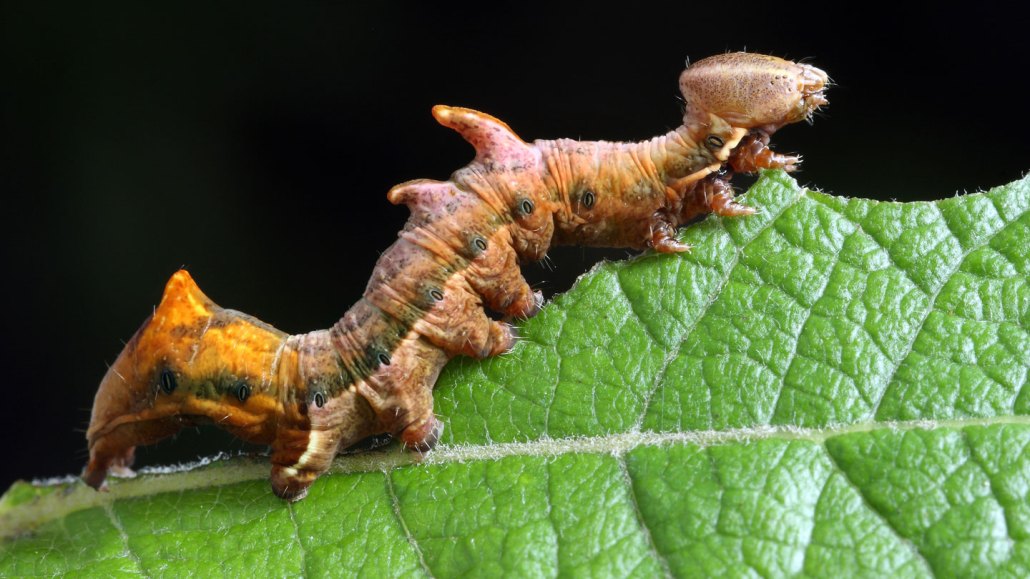Streetlights, especially super bright LEDs, may harm insect populations
Turning down some lights or applying filters might benefit nocturnal insects, a study suggests

A pebble prominent moth caterpillar (Notodonta ziczac) munches on a leaf. The species has shrunk in number by 45 percent since the 1970s, and new research shows artificial light may play a small role in the insect’s decline.
Patrick Clement/Butterfly Conservation






